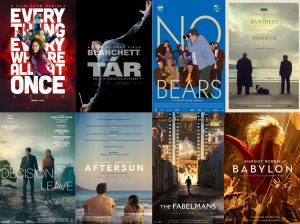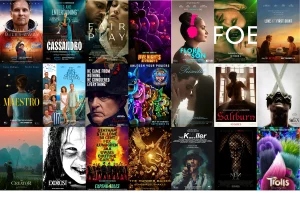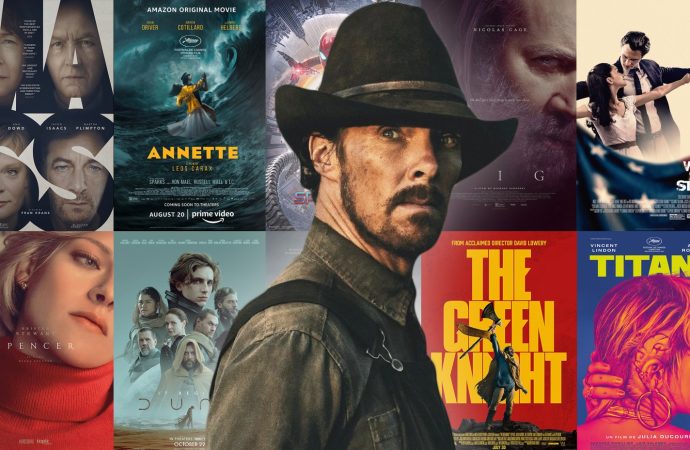Introduction In recent years, streaming platforms have dramatically changed how we watch movies. For independent filmmakers, this change has brought both opportunities and challenges. Streaming platforms like Netflix, Amazon Prime, and Hulu have made it easier for indie films to be seen by a global audience. But how exactly have streaming platforms affected the Streaming
Introduction
In recent years, streaming platforms have dramatically changed how we watch movies. For independent filmmakers, this change has brought both opportunities and challenges. Streaming platforms like Netflix, Amazon Prime, and Hulu have made it easier for indie films to be seen by a global audience. But how exactly have streaming platforms affected the Streaming Indie Film Industry? Let’s take a closer look.
The Growth of Streaming Platforms

Image by: Yandex.com
Streaming platforms have changed the way we watch films. Instead of going to a theater, we can now watch movies at home whenever we want. Services like Netflix, Amazon Prime, and Hulu have become huge players in the entertainment world. These platforms don’t just offer big Hollywood blockbusters; they also buy and produce indie films. This has created new opportunities for independent filmmakers.
More Access for Indie Filmmakers
Before streaming, indie filmmakers faced many challenges getting their films seen by a wide audience. Releasing a film in theaters required a lot of money and support, which many filmmakers didn’t have. However, streaming platforms have made it easier for indie films to reach audiences around the world. Platforms like Netflix and Amazon Prime give indie filmmakers a chance to show their work to millions of people without needing a traditional movie deal.
New Opportunities for Unique Stories

Image by: Yandex.com
Indie filmmakers often create films that tell different or unique stories that may not appeal to a large audience. Streaming services have helped these films find an audience. For example, films about specific cultural issues, LGBTQ+ stories, or experimental art films can now be discovered by people who might never have seen them in theaters. Streaming Indie Film Industry allow these films to be seen by a global audience, making it easier for niche films to find their place.
How Indie Filmmakers Make Money
While streaming platforms give filmmakers more exposure, the way they make money has changed. In the past, filmmakers earned money through theater ticket sales, DVD sales, or television rights. Today, many indie filmmakers receive a one-time payment from streaming platforms or a share of the revenue based on how many people watch their films. This can be a great way to make money over time, but it can also be less predictable than traditional methods.
Some filmmakers may find it difficult to make enough money through streaming platforms. While streaming services give indie films exposure, they don’t always guarantee big earnings. Many indie filmmakers may earn less upfront money than they would from a theatrical release.
Creative Control

Image by: Yandex.com
One of the biggest advantages of streaming platforms for indie filmmakers is the ability to maintain creative control. In the traditional film industry, filmmakers often have to compromise their vision to satisfy producers or studios. But streaming platforms like Netflix and Amazon Prime often give filmmakers more freedom to make the film they want, without major interference.
This flexibility is a huge benefit for independent filmmakers. They can experiment with different storytelling styles, genres, and themes that might not fit in a traditional Hollywood movie.
Film Festivals and Distribution
In the past, indie filmmakers would often premiere their films at film festivals like Sundance or Cannes before finding a distributor. Today, some filmmakers are skipping the festival route and releasing their films directly on streaming platforms. These platforms even host their own film festivals or competitions, which give filmmakers another way to showcase their work.
This has changed the way films are distributed. Many filmmakers are now choosing to release their films on streaming platforms, bypassing traditional theaters and festivals altogether.
Streaming Services and Content Licensing

Image by: Yandex.com
For indie filmmakers, licensing their films to streaming platforms can be a good way to generate revenue. Streaming services often buy the rights to films for a set period of time, allowing the film to be available to subscribers. This can be an excellent opportunity for filmmakers to reach a wider audience without the cost of distributing through traditional methods. However, the amount of money offered by streaming services can vary, and filmmakers may need to negotiate to ensure they are fairly compensated for their work. Licensing deals with multiple platforms can help increase the visibility and revenue potential of indie films.
Collaborations Between Filmmakers and Streaming Platforms
Many streaming platforms now work directly with indie filmmakers to create original content. These partnerships have opened up new opportunities for filmmakers to work with major platforms while retaining creative control. For example, platforms like Netflix and Hulu have invested in producing indie films, offering filmmakers financial support while letting them tell their unique stories. These collaborations can benefit both the filmmakers and the streaming services, as they allow the platforms to offer fresh and diverse content to their subscribers.
New Opportunities for Global Audiences

Image by: Yandex.com
One of the biggest advantages of streaming is its global reach. In the past, indie films had a hard time reaching audiences outside their own countries or regions. But now, with streaming platforms, a film made in one country can be watched by people all over the world. This is especially helpful for films that tell stories from different cultures or focus on niche topics. Indie filmmakers can now find viewers who appreciate their work, no matter where they are located. This has helped diverse voices be heard and has brought more variety to the film industry.
The Shift from Theaters to Home Viewing
Before streaming, indie films were often shown in small theaters or film festivals. These films would have a limited audience and a short run in theaters, making it harder for them to be profitable. Streaming platforms have changed this. Now, indie films can be watched in the comfort of people’s homes at any time. This shift has opened up a new way of experiencing films. It also means that audiences don’t have to go to a theater or wait for a DVD release. They can access a wide range of films with just a few clicks, making it easier for indie films to be discovered.
Impact on Film Distribution

Image by: Yandex.com
In the past, film distribution was a complicated process. Filmmakers had to find a distributor who would sell their film to theaters, TV networks, or DVD companies. This process could take months or even years. Streaming platforms have simplified this. Now, filmmakers can distribute their films directly on platforms like Netflix or Amazon Prime. This saves time and money, and it allows filmmakers to have more control over their work. However, getting a film on a streaming platform can still be difficult, and filmmakers must find the right platform for their film.
Marketing Indie Films in the Streaming Era
Marketing an indie film is never easy, but streaming platforms have changed the game. On one hand, streaming services offer a chance for films to reach a global audience without the need for expensive ad campaigns. On the other hand, it’s harder for indie films to stand out because there is so much content available. Filmmakers need to be creative with their marketing strategies, using social media, film festivals, and online communities to promote their films. By building a strong online presence, filmmakers can find their audience and make sure their films don’t get lost in the crowd.
Challenges of Streaming for Indie Filmmakers
Despite the opportunities, streaming platforms also bring some challenges. One of the biggest problems is the amount of content available. There are thousands of films on platforms like Netflix, Amazon Prime, and Hulu, which makes it difficult for a film to stand out. Even if an indie film is good, it might get lost in the crowd.
Another issue is that streaming platforms often rely on algorithms to decide which films to recommend to viewers. These algorithms tend to favor popular films or big names in the industry. This can make it harder for smaller indie films to get noticed, even if they are unique and well-made.
The Future of Indie Films and Streaming

Image by: Yandex.com
The future of the indie film industry looks bright thanks to streaming platforms. As demand for unique and diverse content grows, indie filmmakers will continue to find new ways to reach global audiences. However, competition on these platforms will also increase, making it harder for some films to stand out.
To succeed in the streaming world, indie filmmakers will need to be creative with their marketing strategies and make use of the latest technologies. The ability of streaming platforms to reach a worldwide audience will continue to play a key role in the success of indie films.
Analysis Table: Impact of Streaming Platforms on Indie Films
| Factor | Positive Impact | Negative Impact |
|---|---|---|
| Distribution Reach | Global access for indie films. | Lots of competition makes it hard to get noticed. |
| Revenue Generation | Long-term earnings as films are viewed globally. | Smaller payments upfront and uncertain long-term profits. |
| Creative Control | Filmmakers can keep their original vision. | Limited marketing for unknown films. |
| Exposure for Niche Content | More chances for unique and niche films to be seen. | Hard to get noticed among a large amount of content. |
| Film Festivals | Direct release to streaming platforms bypasses festivals. | Missing out on festival prestige and recognition. |
Comparative Table: Traditional Distribution vs. Streaming Platforms
| Criteria | Traditional Distribution | Streaming Platforms |
|---|---|---|
| Upfront Payment | Large payments for big studios. | Smaller payments or revenue-sharing agreements. |
| Audience Reach | Limited to theaters in specific regions. | Global reach, accessible to millions of subscribers. |
| Marketing Support | Extensive marketing for major films. | Less marketing for indie films, based on algorithms. |
| Creative Freedom | Limited by studio requirements. | More freedom for indie filmmakers. |
| Revenue Model | Earnings from ticket sales, DVD, and TV rights. | Earnings based on views or lump-sum payments. |
Conclusion
The rise of streaming platforms has had a huge impact on the indie film industry. These platforms have provided new opportunities for filmmakers to share their work with a global audience and gain creative freedom. While there are challenges, such as standing out among the vast amount of content available, the future of indie films looks bright. Streaming Indie Film Industry has made it easier for diverse stories to be told, and filmmakers now have more control over how their films are distributed and marketed. As streaming platforms continue to grow, indie filmmakers will have even more opportunities to reach new audiences and shape the future of cinema. The relationship between streaming and indie films will only grow stronger, offering both challenges and exciting possibilities for filmmakers.
















